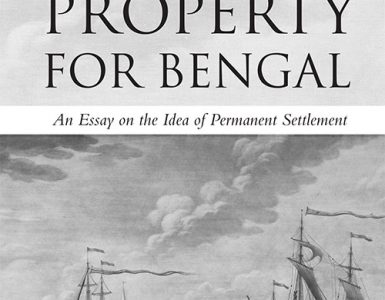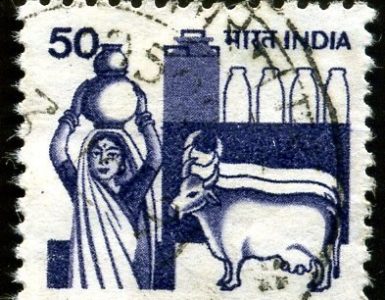Courtney Hallink
Following the end of apartheid in 1994 and South Africa’s first democratic election, the country gained international attention for the rapid expansion of its social grant system and the inclusion of the right to social assistance in the new constitution. As of 2018, roughly 44 per cent of all households receive at least one social grant every month – a non-contributory cash transfer funded by government revenue (South Africa Social Security Agency, 2018).
the focus on inclusion has distracted from the ways in which South Africa’s social grant system is also necessarily a system of exclusion
However, the focus on inclusion has distracted from the ways in which South Africa’s social grant system is also necessarily a system of exclusion. Social grants are provided to low-income caregivers with children, the elderly, and differently abled individuals. Working-age adults who are unemployed are excluded from the grant system, despite the constitutional right to social assistance for all and the exceptionally high unemployment rate. Individuals who are formally employed have access to the Unemployment Insurance Fund; however, it only provides individuals with short-term unemployment benefits and excludes informal workers.
Long-term unemployment accounts for 75 per cent of the unemployed, while informal employment accounts for about 17 per cent of the work force (Rogan & Skinner). This is approximately 9 million people, or 15 per cent of the population. Black South Africans are disproportionately represented in both these categories.
The racialized nature of unemployment in South Africa is perhaps most obvious through the country’s unemployment statistics. In the first quarter of 2021, the unemployment rate for ‘Black’ South Africans was 48 per cent whilst the unemployment rate for ‘Coloured’ South Africans was 24, 14 for ‘Indian’ South Africans, and 9 for ‘White’ South Africans (Statistics South Africa, 2021) (1).
I trace these exclusions back to South Africa’s colonial period, beginning with the adoption of the Unemployment Benefit Act in 1937 which established the Unemployment Insurance Fund. The unemployment insurance system was established alongside the implementation of racial segregation and suited the objectives of both capitalist expansion and the extension of colonial power. It was a part of a larger project of separating urban ‘citizens’ from rural ‘subjects’ – ‘modern’ from ‘pre-modern’ and ‘civilized’ from ‘uncivilized’.
While the legislation has been amended and repealed several times, the core structure of the fund has stayed the same, even after the end of apartheid in 1994. Although the insurance legislation was ostensibly de-racialized following the end of apartheid, it continues to reproduce stratification along the same dimensions it did throughout the colonial period. This points to the limits of inclusion – however limited that inclusion might be – in systems that were fundamentally built on exclusion. We must be more creative in the ‘post’-colonial present when imagining new systems that are truly emancipatory and capable of reducing socio-economic inequality.
The Colonial Origins of South Africa’s Unemployment Insurance System
Between 1937 and 1949, the foundations for South Africa’s unemployment insurance system were laid. The fund was first established with the 1937 Unemployment Benefits Act, which excluded all casual workers and ‘native’ mine workers. In 1946, the act was repealed and replaced with the Unemployment Insurance Act. The new act introduced the exclusion of all rural Black South Africans. It also excluded Black South Africans working on gold and coal mines, individuals employed in agriculture, and domestic workers.
In 1947, a Commission of Inquiry was established to make recommendations for the system of unemployment insurance. Members of the commission pushed for the exclusion of all Black South Africans, not just Black South Africans working in rural areas. The Act was eventually amended in 1949, one year after the National Party won the 1948 election. However, no substantive changes were made.
In 1949, eligibility for the Unemployment Insurance Fund for Black South Africans was excluded to individuals working in fully urbanized, formal employment. Black South Africans in rural areas, and all individuals in casual employment, were made ineligible. Few substantive changes were made following the 1949 amendment act.
In the 1980s, the legislation was amended several times to account for independence granted to the ‘Bantustans’ or ‘homelands’ (although their independence was never recognized by any other government), which were geographically secluded and administratively separate regions that Black South Africans were forcibly moved to according to ethno-linguistic groupings. The legislation replaced the exclusion of rural workers with the exclusion of individuals in the Bantustans – the logic being that neither were citizens of South Africa and therefore were ineligible for state assistance.
I locate these exclusions within the South African Marxist tradition which situates the development of racial segregation in the demands of capitalist expansion. In 1972, Harold Wolpe, a South African exile who escaped prison after the Rivonia Trial in 1963, wrote what would later be considered a key text in the South African tradition of radical political economy (Wolpe, 1972). Drawing from Rosa Luxemburg’s dual economy thesis, Wolpe theorized the development of segregation and apartheid in ways that we would now understand as racial capitalism – a term which was first used by South African exiles Martin Legassick and David Hemson, and famously theorized by Cedric Robinson in his magnum opus, Black Marxism: The Making of the Black Radical Tradition.
Wolpe posited that racial segregation enabled the demands of capitalist expansion by allowing the capitalist economy to exploit the subsistence economy in the ‘reserves’ by fixing wages below the level of subsistence, owing to the presumption that the worker’s subsistence could be met through support from the extended family (whether or not this was actually true in practice). This underpinned the migrant labour system which was a cornerstone of the South African economy.
This process was necessarily gendered in that it was almost entirely men who were engaged in migrant work while women were forced to fill the subsistence roles in the reserves. This logic was used by the colonial state to justify the exclusion of migrant and rural workers from the unemployment insurance system. The cost of labour would be lower if neither employers nor the government had to contribute to the unemployment insurance on their behalf.
Mahmood Mamdani’s Citizen and Subject is particularly useful in grappling with how social welfare legislation fit within the larger colonial project of racial segregation beyond the demands of capitalist expansion (1996). Mamdani describes the colonial state as a bifurcated power where individuals in urban areas were seen as citizens and were fully incorporated into the state’s institutions, including unemployment insurance, whereas individuals in rural areas were viewed as subjects and ruled through customary law.
This involved a racialization of individuals in urban areas and a ‘tribalization’ of individuals in rural areas
This involved a racialization of individuals in urban areas and a ‘tribalization’ of individuals in rural areas, or the reserves (and later, ‘Bantustans’). This created a distinction between ‘modern’ and ‘pre-modern’; ‘civilized’ and ‘tribalized’; and formal and informal. In all cases, the latter was perceived as the former’s negation.
Post-1994 Unemployment Security System
The exclusions laid in the period between 1937 and 1949 largely characterized the unemployment insurance system until it was revised in 2001, seven years after the end of apartheid. The 2001 legislation incorporated all employees, regardless of whether workers were in rural or urban areas. However, it did nothing to incorporate informal employees. The state also resisted efforts to include unemployed adults in the social grant system.
As early as 1998, a universal basic income was raised by the Congress of South African Trade Unions (COSATU) – the trade union which makes up one of the parties of the governing Tripartite alliance with the African National Congress and the South African Communist Party. After the idea was raised by COSATU, the government commissioned the Taylor Committee in 2000 to investigate gaps in the cash transfer system and deliver policy recommendations. In 2002, the Taylor Committee proposed a Basic Income Grant of R100 to be paid each month to all South African citizens. The proposal had considerable support from civil society and led to the creation of the BIG coalition. Yet, the proposal was ultimately rejected due to concerns about ‘dependency’ and questions about affordability.
Following the rejection of the BIG, the debate about basic income has been largely absent from policy discussions (Hallink, 2021). However, with the onset of Covid-19 pandemic, working-age adults were suddenly made eligible for a cash transfer under the ‘emergency coronavirus grant’. It would provide R350 to all unemployed adults not currently receiving a grant. Individuals who had been unemployed far before the onset of the pandemic were suddenly made eligible for a cash transfer, albeit temporarily.
Once there was a ‘legitimate’ external cause for South Africans’ unemployment status, social grants were considered appropriate for the unemployed (Ibid). The emergency Coronavirus grant was set to be replaced by a basic income grant; however, the emergency grant lapsed on the 30th of April 2021 and no announcements were made about the introduction of the promised basic income. The SRD was reintroduced after nationwide unrest in July and currently remains in place. However, the grant could be ended at any time without a warning.
Until we reckon with the legacies of colonial social welfare legislation, the existing unemployment security system will continue to reproduce stratification and socio-economic inequality
The urban/rural division that was institutionalized during segregation and apartheid was not about the geographical division simply put but was a shorthand for separating fully ‘modernized’ or ‘urbanized’ Black South Africans from so-called ‘tribal’ Black South Africans, both ontologically and physically. The division between formal and informal remains, but it transcends the geographical distinction made by colonial policy-makers. Until we reckon with the legacies of colonial social welfare legislation, the existing unemployment security system will continue to reproduce stratification and socio-economic inequality in post-colonial South Africa.
Notes
(1) The apartheid state introduced four racial categories. The categories ‘Black’, ‘Coloured’ (a category with a complicated history that is now often simplistically reduced to mean ‘mixed race’), ‘Indian/Asian’ and ‘White’ are still used today.
References
African Social Security Agency. “A statistical summary of social grants in South Africa, February.” Pretoria: SASSA, 2018.
Hallink, C. “South Africa’s time for a basic income grant has come – but the ANC is still apprehensive and non-committal.” Daily Maverick, 2 February 2021. Retrieved from https://www.dailymaverick.co.za/article/2021-02-02-south-africas-time-for-a-basic-income-grant-has-come-but-the-anc-is-still-apprehensive-and-non-committal/
Mamdani, M. Citizen and Subject: Contemporary Africa and the Legacy of Late Colonialism. Princeton: Princeton University Press, 1996.
Rogan, M. & C. Skinner, “The size and structure of the South African informal sector 2008-2014: a labour-force analysis.” In The South African Informal Sector: Creating jobs, reducing poverty, edited by F. Fourie, 77-102. Cape Town: HSRC Press, 2018. Retrieved from https://www.hsrcpress.ac.za/books/the-south-african-informal-sector-providing-jobs-reducing-poverty.
Statistics South Africa. “Quarterly Labour Force Survey, Q1: 2021.” Pretoria: Republic of South Africa, 2021. Retrieved from https://www.statssa.gov.za/publications/P0211/P02111stQuarter2021.pdf.
Wolpe, H. “Capitalism and cheap labour-power in South Africa” in Segregation and Apartheid in Twentieth-Century South Africa, edited by W. Beinart & S. Dubow, 60-90. London: Taylor & Francis, 1995.

Courtney Hallink is a PhD candidate in the Department of Sociology at the University of Cambridge. She previously completed her master’s at the University of Cape Town. Courtney’s research examines how the legacy of colonial unemployment insurance legislation affects the racialization of social citizenship in post-colonial South Africa. In other words, she asks how social welfare policies implemented during Segregation and Apartheid continue to create and reinforce stratification (both intentionally and unintentionally) in the post-1994 era. Courtney’s research is situated in current debates about the extension of South Africa’s social grant system to unemployed adults and the implementation of a basic income.
Header Image Credit: Jason Leung, Unsplash
TO CITE THIS ARTICLE:
Hallink, Courtney 2021. ‘The Legacy of Colonial Social Welfare Legislation’ Discover Society: New Series 1 (4): https://doi.org/10.51428/dsoc.2021.04.0008




